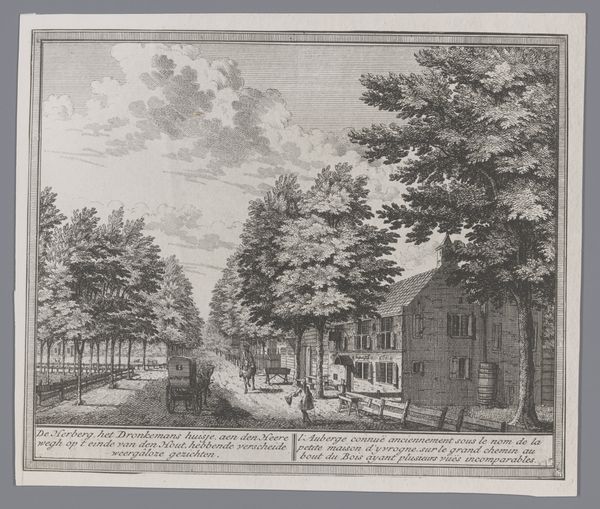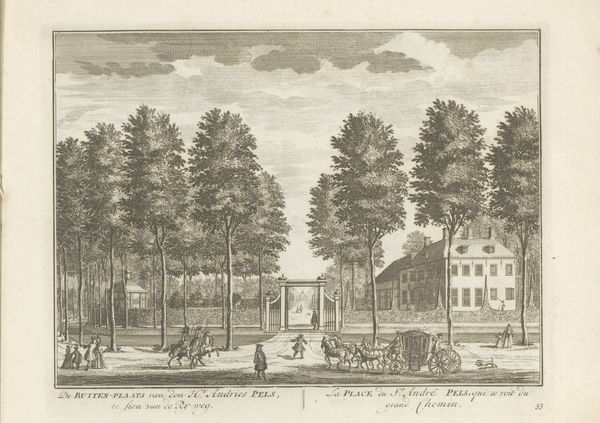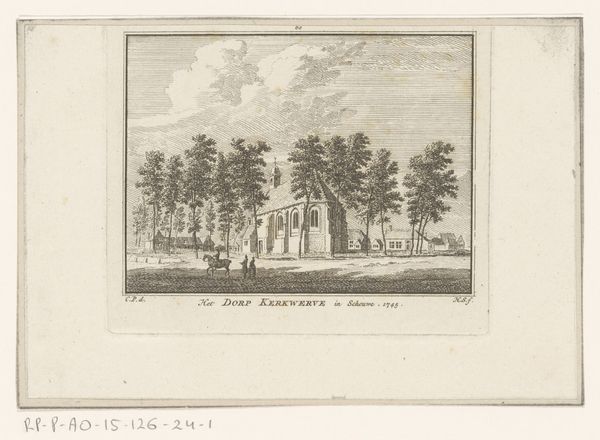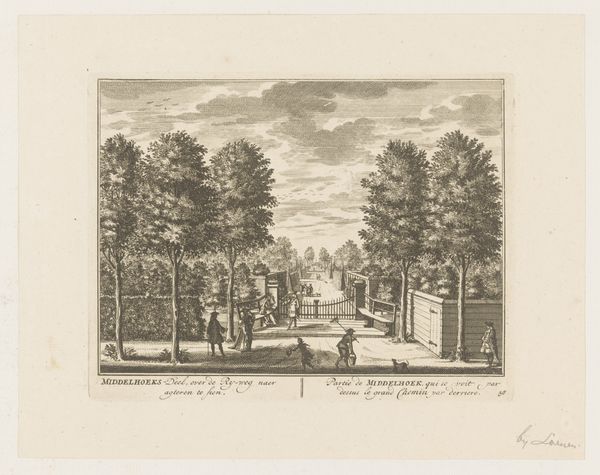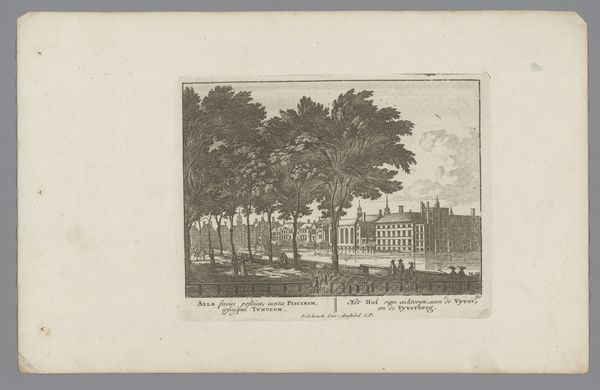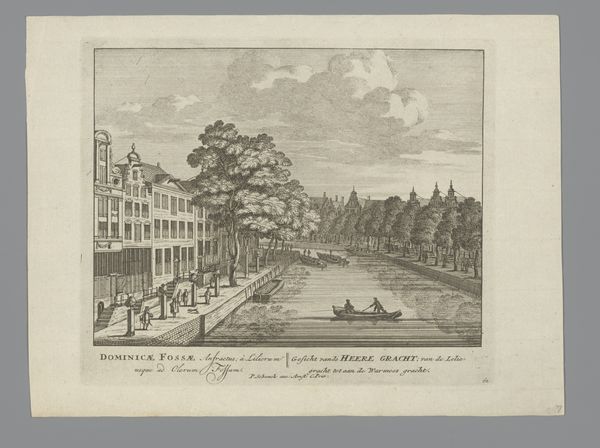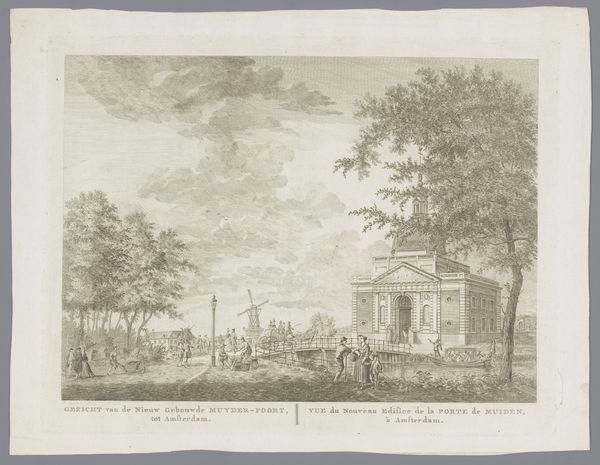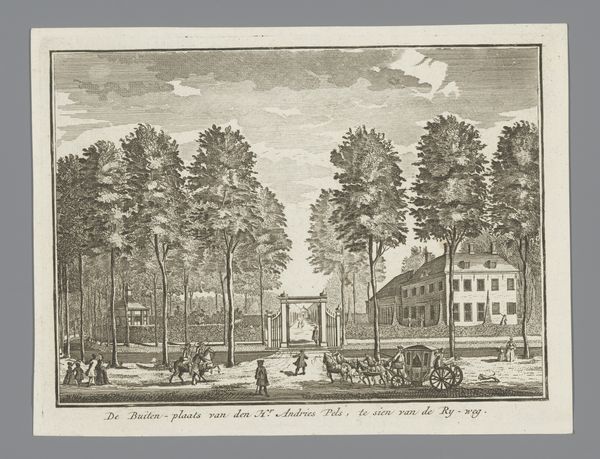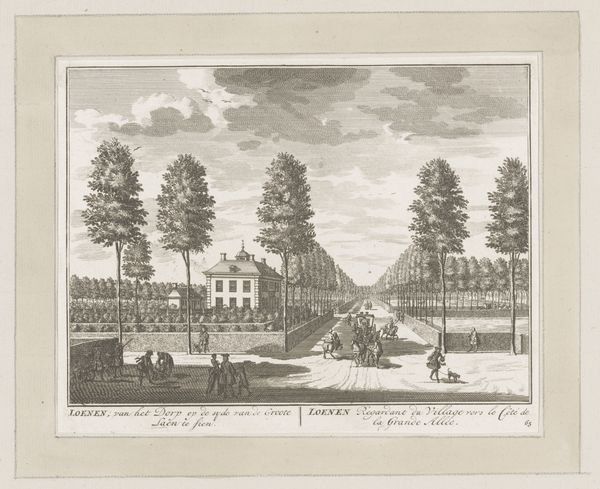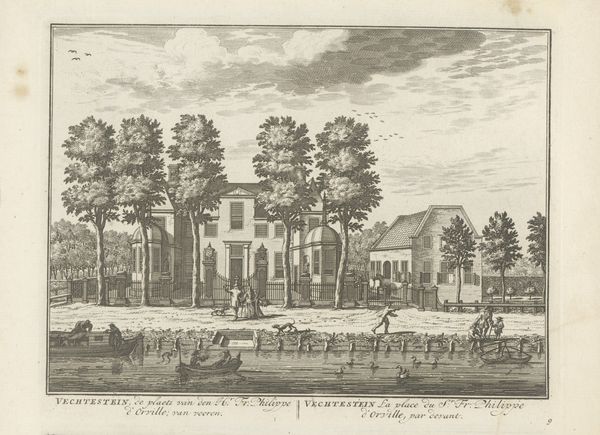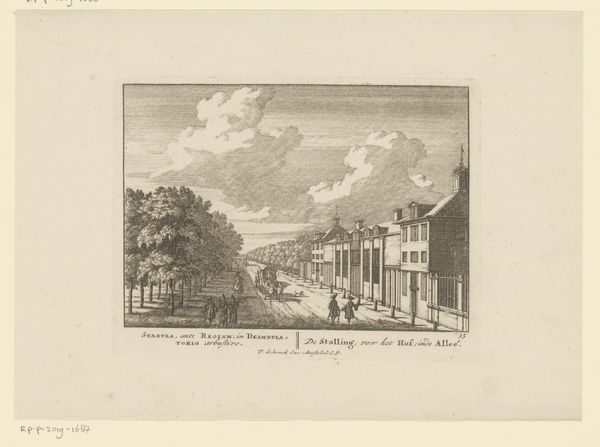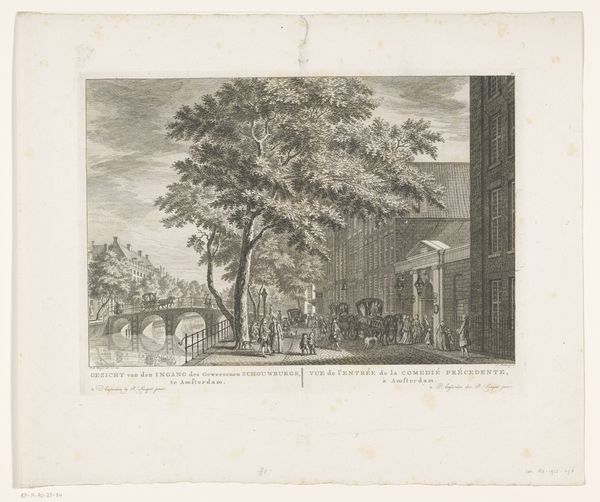
print, etching, engraving
#
dutch-golden-age
# print
#
etching
#
old engraving style
#
landscape
#
cityscape
#
genre-painting
#
engraving
Dimensions: height 82 mm, width 106 mm
Copyright: Rijks Museum: Open Domain
Curator: Looking at this, I immediately feel a strange stillness. The whole scene seems almost... bleached, you know? As if the sun’s perpetually stuck at noon. Editor: That's interesting. You are reacting to "View of the Village of Nieuwland," an etching and engraving by Hendrik Spilman, created somewhere between 1754 and 1792. It's currently held in the Rijksmuseum collection. Curator: Rijksmuseum, eh? So, what makes this little slice of village life so important? I mean, beyond just being pretty easy on the eyes. Editor: Spilman, as a draughtsman, was extremely skilled, and during this period there was an increasing desire in the Netherlands to create and collect visual representations of everyday life. The growth of a strong middle class that has disposable income led to demand for artwork that reflected the world around them. Views like this one, emphasizing tranquility and civic pride, were very popular. Curator: So, propaganda of the mundane? But in such a sweet, delicate way! I’m fixated on the trees – the way they frame the road leading to that church spire. There’s something quietly reverential about it. And that gathering of figures, they give life to this otherwise placid place. Editor: Indeed. Spilman is participating in a longer tradition of Dutch landscape art—that focus on seemingly banal subjects, executed with exquisite detail. Notice how carefully rendered the textures are - brickwork and foliage are all minutely, subtly represented. Curator: It reminds me of a snow globe – that idealized version of a place that's so calm, nothing bad could ever happen. Does that reading feel far off? Editor: Well, the village scene offered a reassuring image to city dwellers as well as to local citizens during times of political uncertainty. As an artwork created for public consumption and display, the image does not provide the complete or accurate representation of village life. The poor are gone. Dissent is eliminated. Spilman crafted an artful narrative to project political calm during uncertain times. Curator: That stillness, now that you say it... maybe it’s not so innocent. Huh. It definitely does make me reconsider that first impression. Thank you. Editor: The politics of imagery are so complex. This exercise has been helpful for me to reconsider an idyllic landscape into a political construct.
Comments
No comments
Be the first to comment and join the conversation on the ultimate creative platform.
